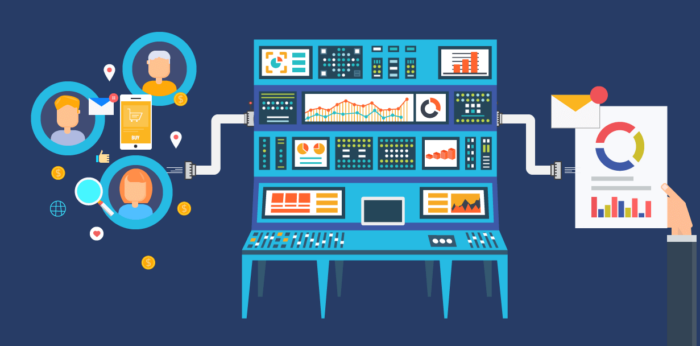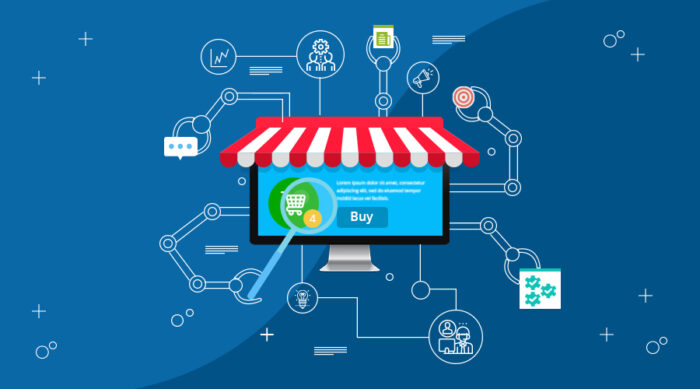
The vast digital universe has given birth to an omnipresent entity known as eCommerce, encapsulating our modern lives. Shopping from the comfort of home, having the world at our fingertips – these aren’t just luxuries anymore, they’re necessities. As this giant continues to grow, one element emerges as pivotal: automation. In a world where milliseconds matter, automation isn’t just an advantage; it’s the linchpin of success. Join me as we dive into the transformative journey of eCommerce, emphasizing the undeniable impact of automation.
1: The Rise of eCommerce

From the first online transaction in the 90s to today’s trillion-dollar industry, eCommerce has been nothing short of revolutionary. According to Statista, global eCommerce sales reached an astonishing $4.28 trillion in 2020. From bespoke crafts to tech giants, the digital marketplace is brimming with potential and promise. The world is witnessing a colossal shift towards online shopping, with projections indicating an even steeper ascent in the years to come.
2: The Role of Automation in eCommerce
Automation, in the world of eCommerce, represents the ingenious fusion of technology with business, enabling tasks to be performed devoid of human intervention. Visualize the magnitude: hundreds of tasks, from intricate order processing to real-time customer support, are executed flawlessly in the digital backdrop. Whether it’s intuitive chatbots promptly addressing queries or advanced AI algorithms decoding intricate shopping behaviors, automation has woven itself intricately into the fabric of online commerce, orchestrating a transformation that’s remarkable in both its scale and depth.
3: Benefits of Automation in eCommerce

In the expansive digital market, automation stands out not just as a tool, but as a groundbreaking force. Its manifold benefits are palpable:
Efficiency: Automated systems tirelessly operate 24/7, outshining human capabilities and limitations in terms of productivity.
Scalability: As the digital footprint of your business expands, automation stands as the backbone ensuring operations never falter under pressure.
Reduced Human Error: The machine-driven operations guarantee consistent and precise outputs, drastically minimizing the scope for discrepancies and mistakes.
Enhanced Customer Experiences: A blend of swift automated responses, hyper-personalized marketing initiatives, and frictionless checkouts ensures customers are not just satisfied but truly delighted.
4: Automating Inventory Management
For any retailer, few scenarios are as dread-inducing as a stock outage. The labyrinth of manual inventory management is fraught with potential oversights. Here, automation emerges as a savior, equipping businesses with real-time stock monitoring, accurate predictive restocking, and fluid integration with suppliers such as WooCommerce integrations. This ensures that inventory levels are not just maintained but meticulously optimized.
5: Personalized Customer Experiences

The modern consumer doesn’t just appreciate personalization; they expect it. A world where shopping experiences mirror personal preferences is what they seek. Automation plays the maestro in this orchestra. Through meticulous user data analysis, businesses are empowered to serve handpicked product suggestions, craft meticulously tailored email campaigns, and dispense content that resonates personally, sealing customer loyalty like never before.
6: Streamlining Order Fulfillment
Navigating the intricacies of order fulfillment is akin to taming a wild beast. The journey from order inception to its delivery at a customer’s doorstep is layered with numerous critical stages. Automation, with its precision-focused approach, refines this process. By streamlining every facet, from order intake to adept packaging and punctual delivery, it ensures that the end result is not just a completed order, but an elated customer singing praises.
7: Data-Driven Decision Making

In the vast realm of eCommerce, data stands as the guiding star, illuminating the path for businesses. Automated tools, with their unparalleled efficiency, ceaselessly collect, categorize, and present pivotal data. This presents businesses with actionable insights that underpin strategic decisions. Be it discerning emerging customer behavior trends or forecasting sales trajectories, automation paves the way for an informed, proactive approach amidst a deluge of data.
8: Chatbots and Customer Support
The era of prolonged, often frustrating waits on hold for customer support representatives is a remnant of the past. Enter the modern savior: chatbots. These automation-powered virtual assistants aren’t just digitized programs but are evolving into intelligent entities, revolutionizing the paradigm of customer interactions. Not only do they deliver instantaneous, on-point responses, but their innate capacity to simultaneously manage multitudes of queries is commendable. Their 24/7 availability and the ability to pull from vast information databases set them leagues apart, epitomizing the zenith of efficient customer service. In an age where time is paramount, chatbots ensure consumers aren’t left in the lurch.
9: Marketing Automation

In the pulsating, ever-evolving landscape of eCommerce, where the dynamics change with every click, static marketing strategies risk being overshadowed. Automation, with its precision and timeliness, emerges as the vanguard in this domain. It doesn’t just assist; it leads. It aids in orchestrating precision-targeted email campaigns, tapping into customer preferences and behaviors. Beyond that, it ensures consistent and engaging social media interactions, creating a seamless brand persona. Add to that the adept management of advertising efforts, where ROI is maximized and waste minimized. The culmination of these efforts? A brand narrative that doesn’t just broadcast but genuinely resonates, weaving a tapestry of loyal engagement.
10: Overcoming Challenges and Pitfalls
Despite its radiant promises and undeniable advantages, automation in eCommerce isn’t without its shadows. Excessive, blind dependence on automated systems can potentially depersonalize the very essence of customer engagements, turning interactions sterile. Moreover, the digital realm isn’t immune to glitches; unforeseen system anomalies can momentarily disrupt and hamper operations, throwing a spanner in the well-oiled machine. However, the remedy doesn’t lie in rejection but refinement. The antidote lies in a meticulously crafted blend: strategic foresight to anticipate challenges, persistent upskilling to remain abreast of the latest, and most importantly, harmonizing the irreplaceable warmth of human interaction with the unmatched speed and efficiency of machines. This balance can pave the golden path in circumventing potential pitfalls.
11: Future Trends in eCommerce Automation

Peering into the vast expanse of the eCommerce automation horizon, it’s not just about spotting trends but beholding a vivid tapestry of ceaselessly emerging innovations. Pioneering technological forces, especially giants like Artificial Intelligence and Machine Learning, aren’t merely present; they’re actively sculpting, refining, and enhancing operational systems. Meanwhile, the meteoric rise of voice commerce, powered by smart home devices, is subtly yet profoundly shifting the very paradigms of shopping, introducing convenience like never before. As we stand at this juncture, projecting forward with insights and data in hand, one conclusion emerges, crystal clear: the symbiotic, entwined journey of eCommerce and automation is not just ongoing but is set to voyage into newer, uncharted, and even more brilliant realms.
Summary
Automation isn’t just a fad or an accessory in the world of eCommerce. It’s the backbone, the silent force propelling businesses forward. In the fiercely competitive digital marketplace, embracing automation is not just recommended; it’s imperative for sustained, exponential growth. As we stand on the cusp of new innovations, one thing remains clear: the future of eCommerce is automated, and it’s glorious.











